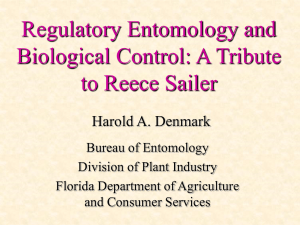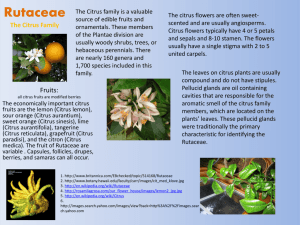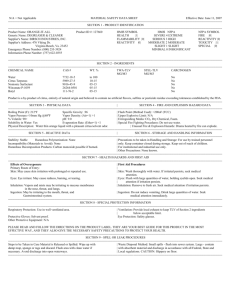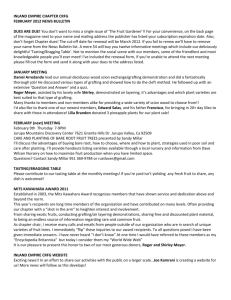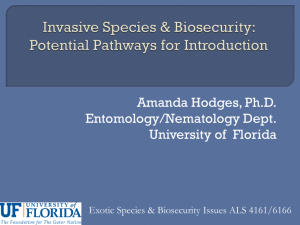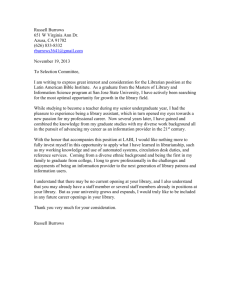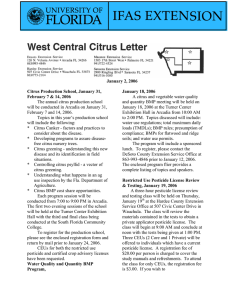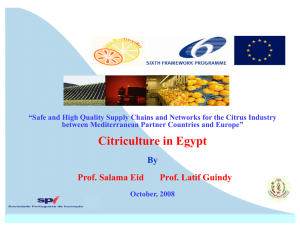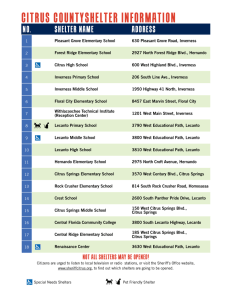Dainty Swallowtail - Butterfly Gardening
advertisement
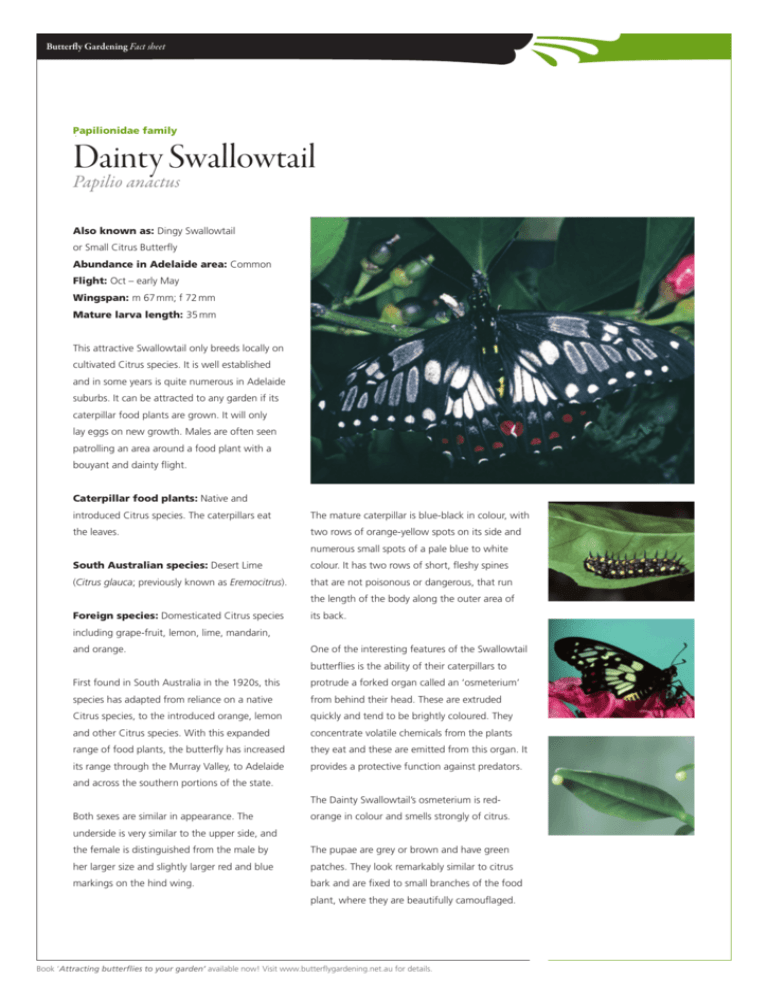
Butterfly Gardening Fact sheet Papilionidae family Dainty Swallowtail Papilio anactus Also known as: Dingy Swallowtail or Small Citrus Butterfly Abundance in Adelaide area: Common Flight: Oct – early May Wingspan: m 67 mm; f 72 mm Mature larva length: 35 mm This attractive Swallowtail only breeds locally on cultivated Citrus species. It is well established and in some years is quite numerous in Adelaide suburbs. It can be attracted to any garden if its caterpillar food plants are grown. It will only lay eggs on new growth. Males are often seen patrolling an area around a food plant with a bouyant and dainty flight. Caterpillar food plants: Native and introduced Citrus species. The caterpillars eat The mature caterpillar is blue-black in colour, with the leaves. two rows of orange-yellow spots on its side and numerous small spots of a pale blue to white South Australian species: Desert Lime colour. It has two rows of short, fleshy spines (Citrus glauca; previously known as Eremocitrus). that are not poisonous or dangerous, that run the length of the body along the outer area of Foreign species: Domesticated Citrus species its back. including grape-fruit, lemon, lime, mandarin, and orange. One of the interesting features of the Swallowtail butterflies is the ability of their caterpillars to First found in South Australia in the 1920s, this protrude a forked organ called an ‘osmeterium’ species has adapted from reliance on a native from behind their head. These are extruded Citrus species, to the introduced orange, lemon quickly and tend to be brightly coloured. They and other Citrus species. With this expanded concentrate volatile chemicals from the plants range of food plants, the butterfly has increased they eat and these are emitted from this organ. It its range through the Murray Valley, to Adelaide provides a protective function against predators. and across the southern portions of the state. The Dainty Swallowtail’s osmeterium is redBoth sexes are similar in appearance. The orange in colour and smells strongly of citrus. underside is very similar to the upper side, and the female is distinguished from the male by The pupae are grey or brown and have green her larger size and slightly larger red and blue patches. They look remarkably similar to citrus markings on the hind wing. bark and are fixed to small branches of the food plant, where they are beautifully camouflaged. Book ‘Attracting butterflies to your garden’ available now! Visit www.butterflygardening.net.au for details.

